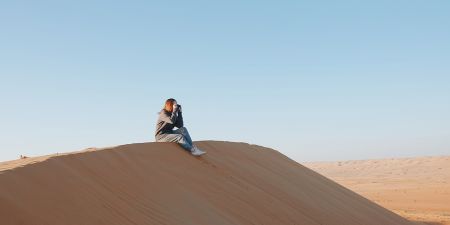Wadi Bani Kharus is one of the best known Oman wadis.The wadi attracts visitors with its fabulous landscapes, fascinating flora and fauna, and gentle breeze.
Bearing witness to the ancient Omani history, the wadi is characterized by the cultivation of many fruit trees and many agricultural crops. It has lots of plants, flowers, medicinal herbs, along with wildlife.
History of Wadi Bani Kharus
The wadi has been a major agricultural spot in Oman for more than hundreds of years. High mountains on both sides consist of limestone formations, ranging from 90 million years old at the entrance of the Wadi to 600 million years in the distant parts of the Wadi.
Location
Wadi Bani Kharus is located in Wilayat AlAwabi, Al Batinah South Governorate.
How to Get There
Wadi Bani Kharus is a long and winding waterway that snakes its way over 30km, all the way from Jebel Akhdar to the village of Al Awabi.
From Capital, Muscat, take Route 1, exiting left onto Route 13 when you get to Barka. Stay on this road all the way to Al Awabi. The wadi can be reached via a track behind the old fort.
The entrance of Wadi Bani Kharus is marked by a small, restored fort, named Al Awabi Castle, from where the road leads towards the village of Al Aliya, about 24 km into the heart of the mountains.
Customize Your Dream Vacation!
Get in touch with our local experts for an unforgettable journey.
Plan Your TripThings to Do at Wadi Bani Kharus
The wadi is surrounded by plenty of pretty mountain settlements such as Stal village with its terraced fields; Sana village with its market gardens, and Ain Karfas, that features an ancient aqueduct.
At Al Markh, there is also a pair of old houses that have towered over the plantations at the Markh. Being photographed much today, for visitors to see them, they have to park and walk down into the wadi bottom.
Sultanate of Oman Culture
Oman Nature Reserves
Wadis in Oman
Caves of Oman
Deserts of Oman
Beaches in Oman
Oman Islands
Hot Water Springs in Oman
Beach Lagoons of Oman
Canyons in Oman
Muscat Geosites
- Al Awabi quartzite in Oman
- Al Fahal Island in Oman
- Al Jabal Al Aswad Oman
- Al Khoud Unconformity in Oman
- Al Khayran in OMAN
- Ayn Al Hammam Hot Spring in Oman
- Bawsher marble in Oman
- Coastal Erosion in Oman
- Concentric fold in Oman
- Intertidal ecosystem in Oman
- Jurassic bedding in Oman
- Limestone Fault in Oman
- Limestone landscape in Oman
- Magnesite veins in Oman
- Mangrove forest in Oman
- Mega fold in Oman
- Mega syncline in Oman
- Mini folds in Oman
- Mutrah Geotrail East in Oman
- Nodular Limestone in Oman
- Nummulites in Oman
- Ophiolite contact in Oman
- Ophiolite obduction in Oman
- Pillow lava in Oman
- Port View in Oman
- Ripple marks in Oman
- Riyam view in Oman
- Schist bedding in Oman
Traditional Villages in Oman
Souqs in Oman
Museums of Oman
Forts in Oman
Castles in Oman
Cities in Oman
Take a day trip south from Muscat to visit the beautiful coastal oasis of Wadi Shab and see traditional Omani life in the beautiful setting of the valley. Along the way you will also visit the Bimah Sinkhole.
Explore one of our Desert Oman Day Tours to Wadi Bani Khalid and Wahiba Sands from Muscat to discover the most significant desert, Wahiba Sands and the oasis of Wadi Bani Khaled. Book Now!
Plan Your Trip!
You Might Also Like
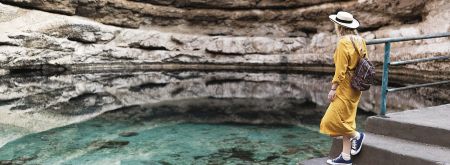
Being one of the most beautiful natural pools in the world, Bimmah Sinkhole is a sinkhole filled with water about 200 meters inland. Know more!
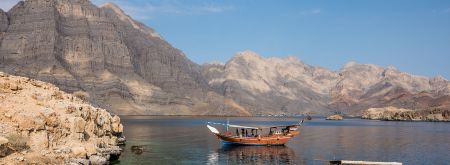
The beautiful Wadi Al Rawda is a marvel that speaks of a very civilized past. It is where visitors can witness the ruins and fossils of the past here. Read more!
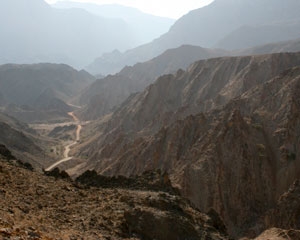
Wadi Al Arbeieen Oman is one of the most beautiful Oman Wadis. It provides the ultimate soundtrack of nature. Know more!
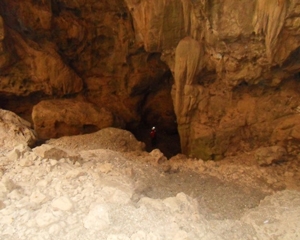
Teeq Cave and Tawi Ateer Sinkhole is the most famous sinkhole and cave in Dhofar governorate. They serve as an amazing tourist destination, for those interested in discovery. Know more!
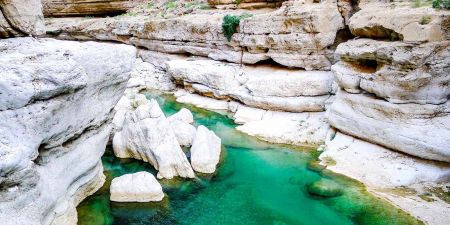
Wadi Al Hawqayn is a chance to experience a pure natural and unforgettable relaxing escape in one of Oman’s best wadis. Know more!
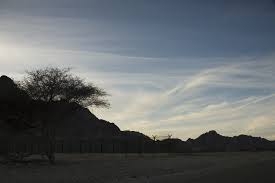
Being one of the best wadis in Oman, at Wadi Al Qahfi, the water flows most of the year and is distinguished by its fresh quality. Read more!
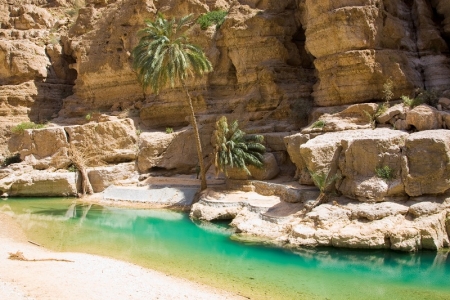
Wadi Al Khoud is one of the largest wadi basins in the Sultanate. Pools are formed in the wadi following heavy rain. Know more!

Wadi Bani Awf also spelled Wadi Bani Awf, is a large wadi that covers a large area with several villages and lots of cool attractions worth visiting. Read more!
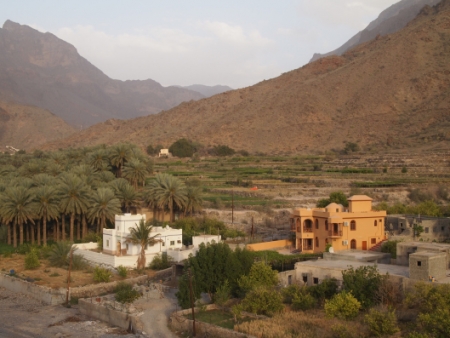
Wadi Bani Kharus is one of the best known Oman wadis.The wadi attracts visitors with its fabulous landscapes, fascinating flora and fauna, and gentle breeze. Know more!
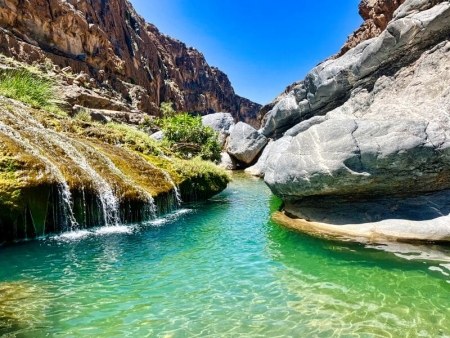
Wadi Damm is one of the most beautiful wadis in Oman. It features clear blue waters, an awesome landscape, and a few very old historical landmarks. Know more!
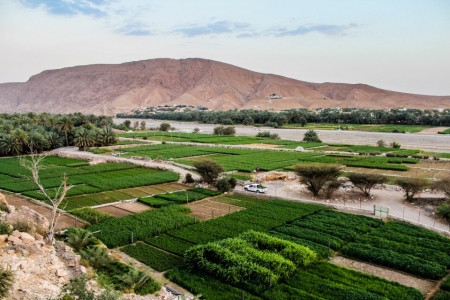
Oman is very well known for its amazing sightseeing places, caves, wadis, villages and more. Wadi Danak is one of the most spectacular wadis to visit in Oman. Read more!
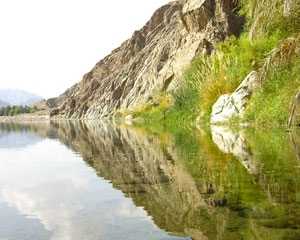
Wadi Ad Dayqah is one of the famous tourist attractions in Oman and one of the largest wadis on the Arabian Peninsula. Read more!
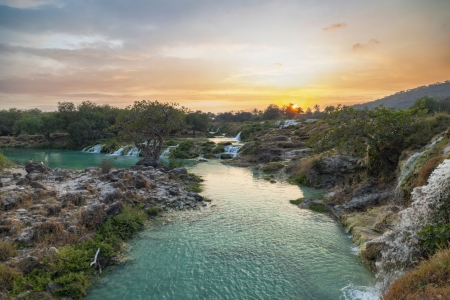
Wadi Darbat is the most beautiful and spectacular place in Salalah city and the perfect spot for mountain, nature, and spring lovers. Know more!
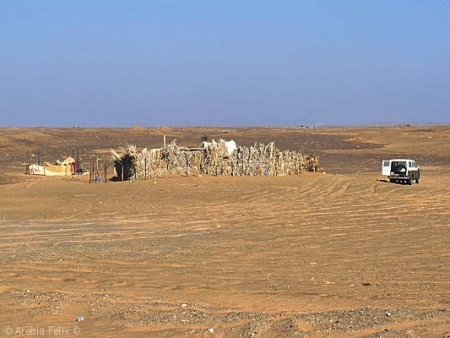
Wadi Andam Oman is blessed with magical landscapes and trees. The wadi offers a seamless combination of trees and rocky formations. Read more!
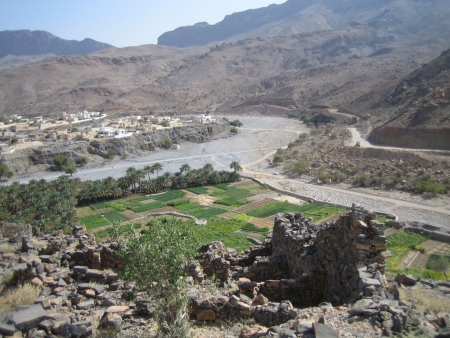
Wadi Al Nakhr is widely popular as the Grand Canyon of the Middle East. The wadi has a village with the same name and can be seen from the top of Jabal Shams. Know more!
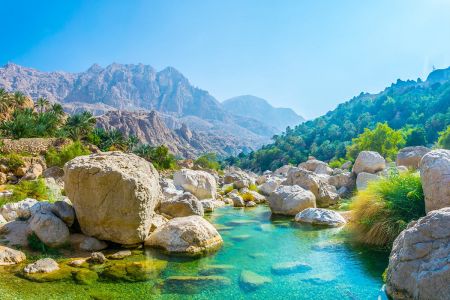
Wadi Ash Shab is one of the top highlights of Oman. The narrow canyon is home to crystal clear blue water pools and also a secret waterfall inside a cave. Read more!



